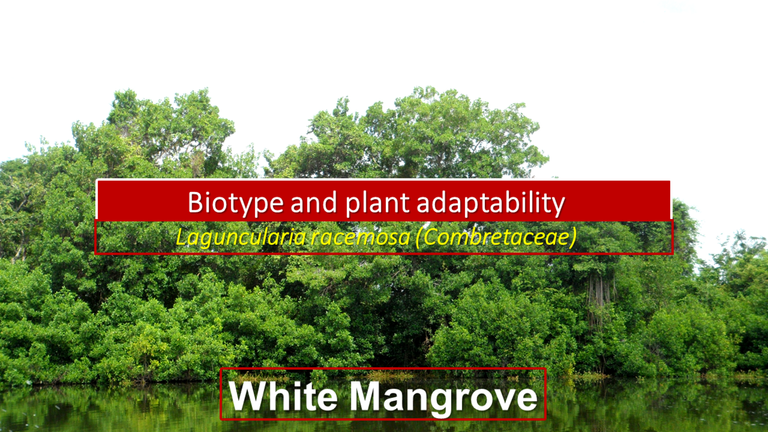
In this delivery, I will develop botanical content related to the morpho-physiological adaptability of Laguncularia racemosa (Combretaceae), known vernacularly as White Mangrove, a biological resource highly appreciated for presenting morpho-physiological characteristics, which allow it to develop in brackish water environments, and produce tannins with anti-inflammatory, antiseptic, astringent and haemostatic action.
Introduction
The ionic imbalance, which is generated at a cellular level in plant species, is called saline stress or osmotic stress, and is a topic widely addressed in eco-physiology, this because it is known that high concentrations of salts break the water homeostasis in cells, metabolic action that has been related to reduced growth, development and reproduction in plants [1].
Even though the ionic imbalance metabolically affects the growth, development and reproduction activities in plants, there are plant species that have adapted physiological and morphological mechanisms to tolerate high levels of salts, in order to be able to establish themselves in extremely saline ecosystems. An example of this is represented by aquatic macrophytes that grow in salty environments, or in their absence, taxa of shrub biotype and terrestrial growth adapted to flooded and saline soils.
However, considering the diversity of species of shrub biotype and terrestrial growth adapted to flooded and saline soils, the post will be describing the mechanism of morpho-physiological adaptability of the species Laguncularia racemosa (Combretaceae), better known as White Mangrove, relating its behavior and growth potential in brackish ecosystems.
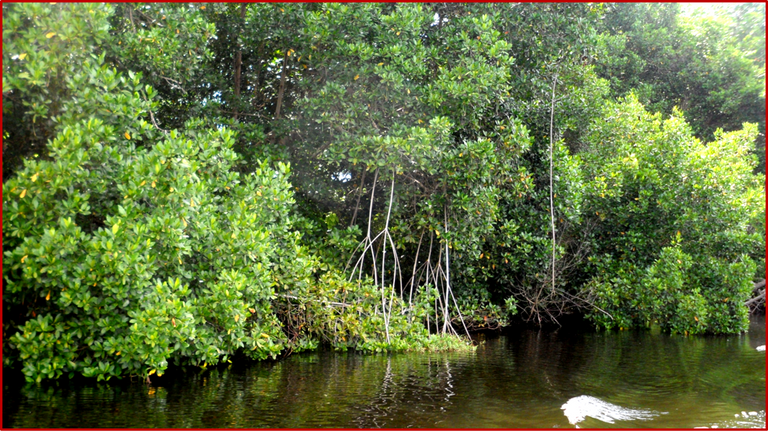
Fig. 2 Adult specimens of Laguncularia racemosa, established in brackish waters of navigation channel caño Puerto Concha, located within the National Park Ciénagas de Juan Manuel - state. Zulia - Venezuela. Author: @lupafilotaxia.
Plant biotype and adaptability
Root and morphological adjustments
From the botanical point of view, the root is the vegetative structure with an elongated morphology that serves as an anchorage and absorption in the plant species, of generally geotropic growth. However, certain plant taxa are characterized by having phototropic or neutral roots [2].
In addition to the anchoring and absorption that characterize the specificity of the roots, these organographic structures also serve as support elements, mainly in plant species adapted to aquatic ecosystems, whose morphological components are ulcerated (elongated root with insertion in the lower nodes of the stem), providing support in flooded conditions.
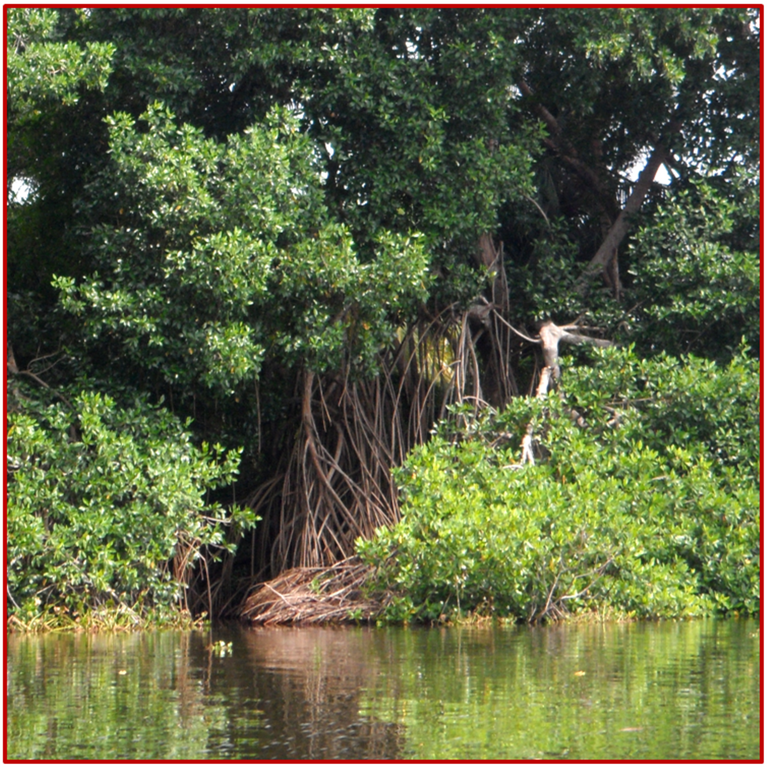
Fig. 3 Roots of morphological fulcrea of Laguncularia racemosa. Author: @lupafilotaxia.
Therefore, in this segment we will describe the main morpho-physiological elements exhibited by the species Laguncularia racemosa, within these; modified roots of halophilic condition, foliar laminae secreting salts, lenticels in furry roots and fruits of early ripening.
Biological characteristics
The White Mangrove Laguncularia racemosa, is categorized as a species of perennial phenological duration, of woody consistency and organographic adaptability of halophyte condition, which indicates that it has internal and external morphological structures, to subsist in saline conditions [3].
Morphological adaptations
The morpho-physiological characteristics observed in Laguncularia racemosa are essentially the opposite of those of terrestrially growing plant species, which is why its typology provides it with moderate adaptability to aquatic ecosystems, as it allows the entry of water with high levels of salt concentration, through the cell membranes located in the system of ulcerous roots, biological action that manages to establish osmotic differences with the external environment, and then serve as a filter in the absorption and transport of water needed for normal growth and development of this species.
With regard to reproduction, the phenomenon of fruits with early ripening occurs in Laguncularia racemosa, since the species induces its ripening in order to guarantee the germination of the seed, before the structure is detached from the plant, and thus ensure that the seedlings are not affected in their growth.
Ecological breadth
With regard to the ecological amplitude, which allows the growth, development and reproduction of the White Mangrove Laguncularia racemosa, there are brackish aquatic environments (balance of fresh and salt water), which have rainfall exceeding 1,800 mm per year, temperatures ranging from 26 and 32 ° C and soils preferably clay-loamy texture and pH 5 to 8 [3].
Pharmacological and industrial potential and usefulness
Source of tannins
The salty conditions in which Laguncularia racemosa develops allow it to produce tannins in a soluble form. These phenolic compounds are used in pharmacology to produce medicines with anti-inflammatory, antiseptic, astringent and haemostatic action, and these phytoelements of variable chemical composition are also used industrially to make dyes and cure skins for the manufacture of clothing.
Agro-morphological field study
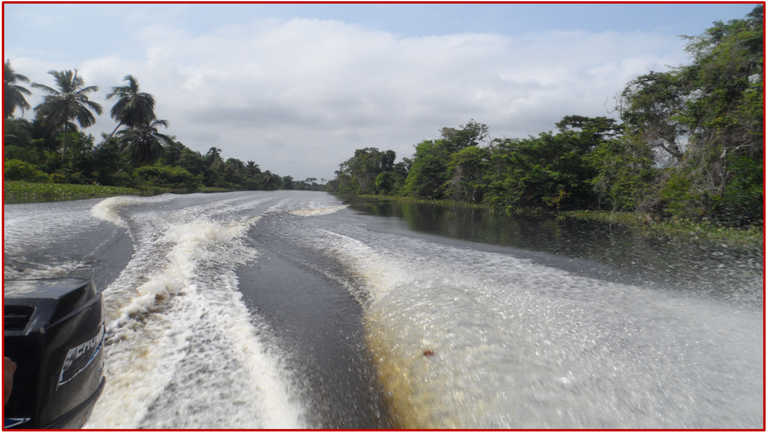
Fig. 4 Tours in lacha on the navigation channel caño Puerto Concha, located within the National Park Ciénagas de Juan Manuel - state. Zulia - Venezuela. Author: @lupafilotaxia.
Species and area of study
In order to socialize some morpho-physiological responses that show the plant species of perennial biotype, woody consistency, and morpho-physiological characteristics to develop in brackish aquatic environments, I will socialize with all of you a study on distribution, location and structural development of the species Laguncularia racemosa (Combretaceae), the area of study corresponds to the navigation channel of the Puerto Concha channel, located within the National Park Ciénagas de Juan Manuel - state. Zulia - Venezuela.
Methodological approach
To determine the distribution and structural development of the species Laguncularia racemosa (Combretaceae), observations and morphological records were made of adult specimens established on the margins of the Puerto Concha navigation channel.
Agro-morphological results
Distribution and location
According to the observations made from the boarding area of the Puerto Concha channel to the mouth of Maracaibo Lake, adult specimens of Laguncularia racemosa, could be seen in the connection path between the fresh waters of the channel and the salt waters of the lake. This response is probably associated with a certain inability of the L. racemosa, shrubs to grow, develop and reproduce in neutral waters.

Fig. 5 Adult specimens of Laguncularia racemosa, established in the connection path between fresh water of the channel and salt water of the Lak. Author: @lupafilotaxia.
Vegetative development
In relation to the vegetative development, the field results contrast a favorable behavior for the adult specimens of Laguncularia racemosa, located in the area of mouth with the Lake of Maracaibo, this behavior can be influenced by the dynamics of the salinity, which possesses the coastal zone in comparison to the navigation channel.
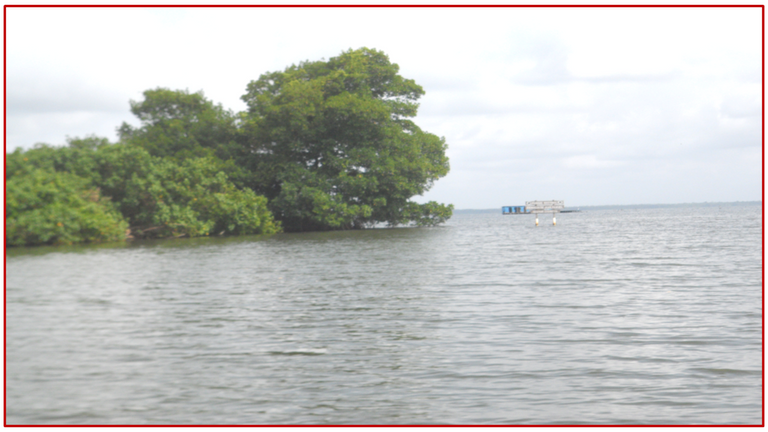
Fig. 6 Adult specimens of Laguncularia racemose, established at the mouth of Maracaibo Lake. Author: @lupafilotaxia.
SCIENTIFIC CONTRIBUTIONS OF THIS PUBLICATION
- The content socialized in the post, provides information about the elements of morpho-physiological adaptability of the White Mangrove Laguncularia racemosa, in addition to its pharmacological and industrial potential, among which stand out; modified roots of halophilic condition, foliar laminae secreting salts, lenticels in fulcrea roots and fruits of early maturation, without ignoring, the biological characteristics and ecological range exhibited by the species. On the other hand, the aspects considered in the post, offer descriptive information for future investigations where utilitarian variables can be valued.
BIBLIOGRAPHICAL REFERENCES CONSULTED AND CITED:
[1] Zhu J. Plant salt tolerance. Trends Plant Science. 2001; 6: 66-71. Article: Online access
[2] Jenik J. Root system of tropical trees. 5. The pegroots and the pneumathodes of Laguncularia racemosa Gaertn. Preslia Prague. 1970; 42: 105-113. Article: Online access
[3] Jiménez J. Laguncularia racemosa (L.) Gaertn. F. White Mangrove. SO-ITF-SM-3. New Orleans, LA: U.S. Department of Agriculture, Forest Service, Southern Forest Experimental Station. (s/f); 64. Article: Online access
[4] Pagaza C. y Fernández N. La familia Combretaceae en la Cuenca del Río Balsas, México. Polibotánica. 2005; 19: 117-153. Article: Online access
[5] FAO. Directrices para la ordenación de los manglares. Dirección de Recursos Forestales. 1994: 367. Article: Online access
ATTENTION
Readers and followers
If you wish to read more scientific articles in English or Spanish, of excellent academic quality, do not hesitate to visit #STEMSocial and #STEM-espanol, communities that promote scientific content mainly in the areas of Science, Technology, Engineering and Mathematics.
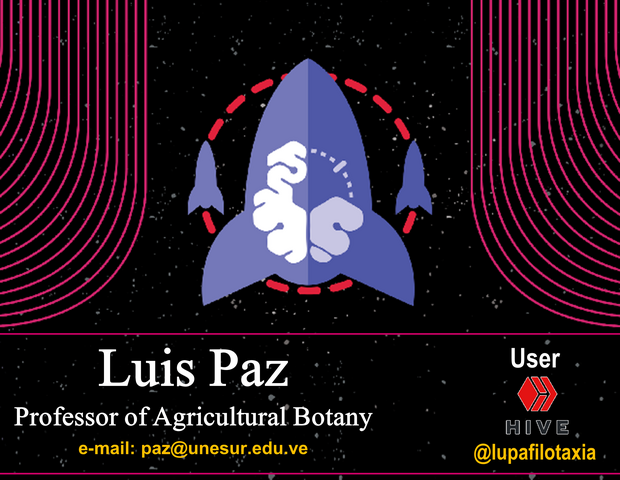
#posh Twitter:
Thanks for your contribution to the STEMsocial community. Feel free to join us on discord to get to know the rest of us!
Please consider supporting our funding proposal, approving our witness (@stem.witness) or delegating to the @stemsocial account (for some ROI).
Thanks for using the STEMsocial app
and including @stemsocial as a beneficiary, which give you stronger support.